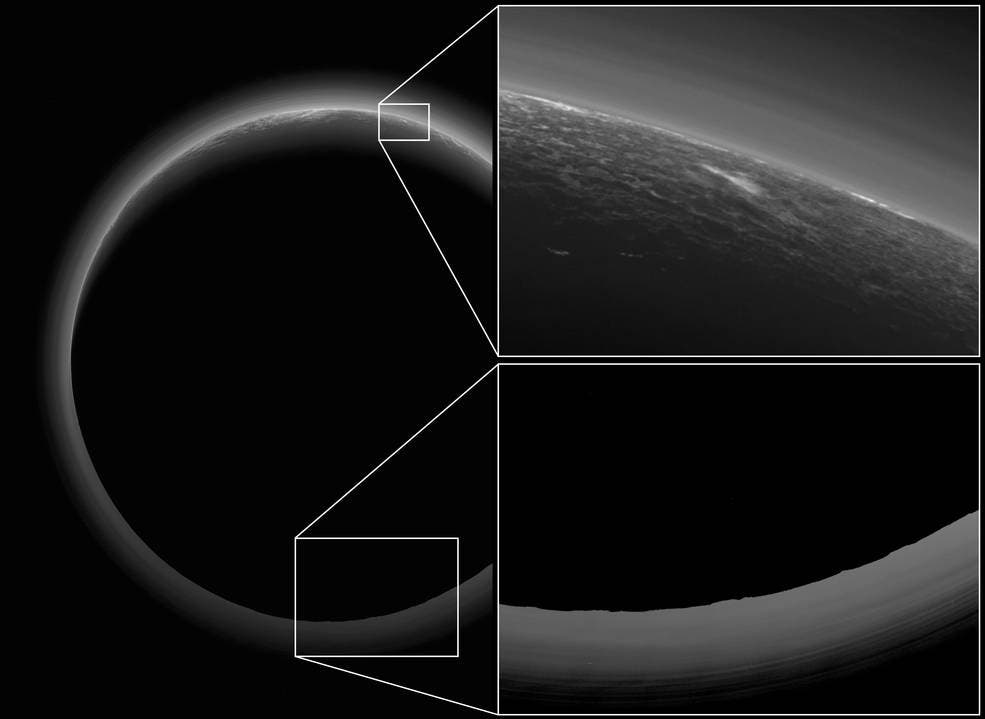A spectacular new image from the New Horizons image highlights what could very well be the first cloud on the dwarf planet.

The New Horizons space probe was launched back in 2006, and in late 2014, neared Pluto and snapped a trove of spectacular images of the former planet. However, because the probe can only send information at a rate of 38 kbps, it takes a very long time to receive all the information. New Horizons is sending back millions of photos and a new such intriguing photo was recently published by NASA.
It shows Pluto from a distance of about 13,400 miles, details the dark and rugged mountains as well as an area called “Pluto’s twilight zone.”
“The topography here appears quite rugged, and broad valleys and sharp peaks with relief totaling 3 miles (5 kilometers) are apparent,” NASA officials wrote.
But more intriguingly, the picture depicts something which looks like a cloud, shining through Pluto’s complicated layers of haze. If it really is a cloud, then it may very well be the only one ever spotted on the dwarf planet.
At the moment, we don’t know for sure if it is a cloud, and we probably won’t know for sure anytime soon. But if it looks like a cloud, and it can be a cloud… then it’s probably a cloud.
“Atmospheric models suggest that methane clouds can occasionally form in Pluto’s atmosphere,” said NASA in the same statement.
As for the rest of the picture, it’s quite useful itself, as NASA writes:
“These silhouetted terrains therefore act as a useful “anchor point,” giving New Horizons scientists a rare, detailed glimpse at the lay of the land in this mysterious part of Pluto seen at high resolution only in twilight. The scene in this inset is 460 miles (750 kilometers) wide.”
We’re only recently starting to learn just how complex and full of surprises Pluto really is. Other findings announced by NASA include:
- Like Earth, Pluto has a long ion tail, that extends downwind at least a distance of about 100 Pluto radii (73,800 miles/118,700 kilometers, almost three times the circumference of Earth), loaded with heavy ions from the atmosphere and with “considerable structure.”
- Pluto is geologically active.
- Pluto’s obstruction of the solar wind upwind of the planet is smaller than had been thought. The solar wind isn’t blocked until about the distance of a couple planetary radii (1,844 miles/3,000 kilometers, about the distance between Chicago and Los Angeles.)
- Pluto has a very thin boundary of Pluto’s tail of heavy ions and the sheath of the shocked solar wind that presents an obstacle to its flow.
Was this helpful?



